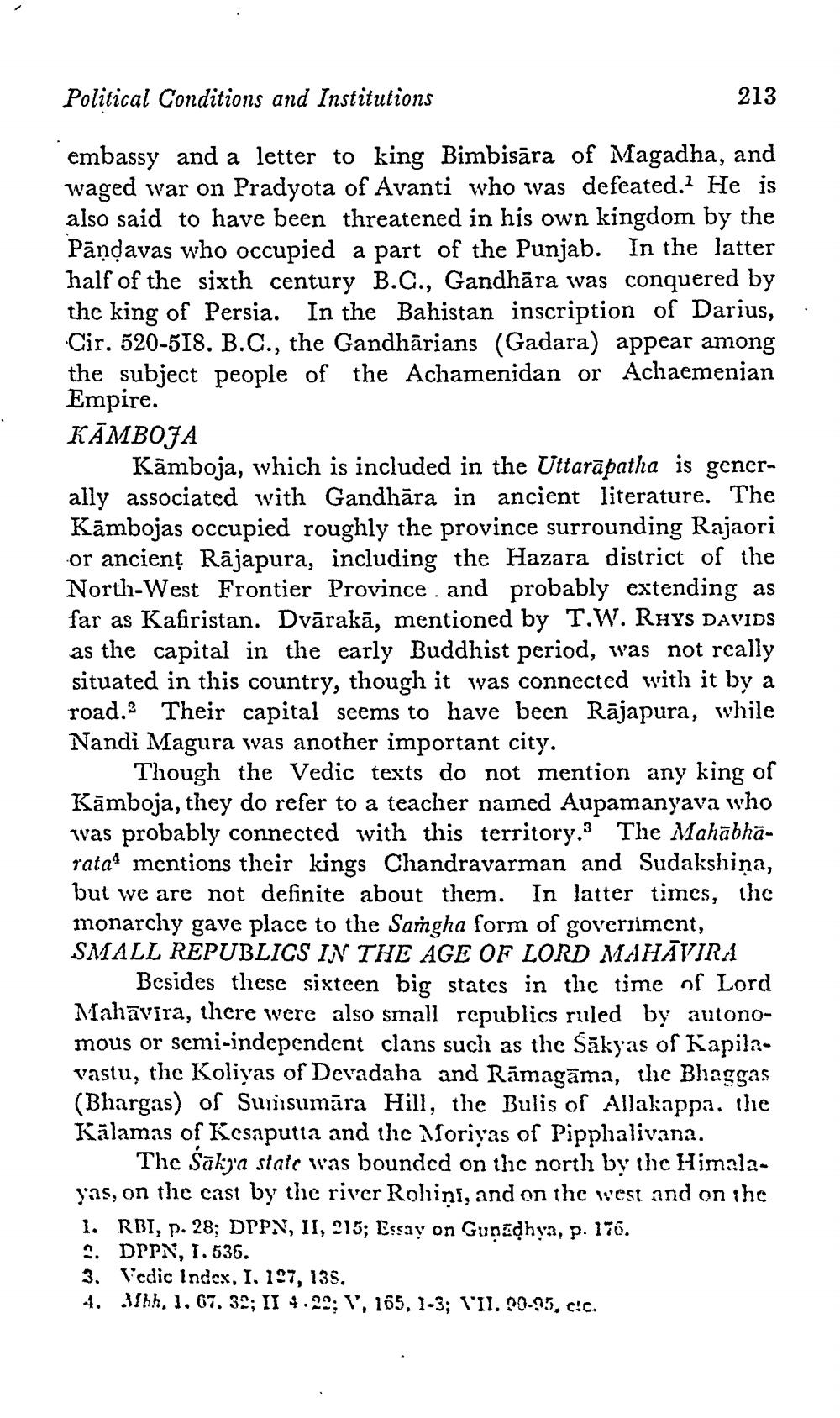________________
Political Conditions and Institutions
213
embassy and a letter to king Bimbisāra of Magadha, and waged war on Pradyota of Avanti who was defeated. He is also said to have been threatened in his own kingdom by the Pāndavas who occupied a part of the Punjab. In the latter half of the sixth century B.G., Gandhāra was conquered by the king of Persia. In the Bahistan inscription of Darius, Cir. 520-518. B.C., the Gandhārians (Gadara) appear among the subject people of the Achamenidan or Achaemenian Empire. KAMBOTA
Kāmboja, which is included in the Uttarāpatha is generally associated with Gandhāra in ancient literature. The Kāmbojas occupied roughly the province surrounding Rajaori or ancient Rājapura, including the Hazara district of the North-West Frontier Province and probably extending as far as Kafiristan. Dvārakā, mentioned by T.W. RHYS DAVIDS as the capital in the early Buddhist period, was not really situated in this country, though it was connected with it by a road. Their capital seems to have been Rājapura, while Nandi Magura was another important city.
Though the Vedic texts do not mention any king of Kāmboja, they do refer to a teacher named Aupamanyava who was probably connected with this territory.3 The Mahabharata* mentions their kings Chandravarman and Sudakshina, but we are not definite about them. In latter times, the monarchy gave place to the Samgha form of goveriment, SMALL REPUBLICS IN THE AGE OF LORD MAHĀVIRA
Besides these sixteen big states in the time of Lord Mahāvīra, there were also small republics ruled by autonomous or semi-independent clans such as the Sākyas of Kapila. vastu, the Koliyas of Devadaha and Rāmagāma, the Bhaggas (Bhargas) of Sursumāra Hill, the Bulis of Allakappa, the Kālamas of Kesaputta and the foriyas of Pipphalivana.
The Sākja state was bounded on the north by thc Himalayas, on the cast by the river Rohini, and on the west and on the 1. RBI, p. 28; DPPN, II, 215; Essay on Gunidhya, p. 176. 2. DPPN, 1.536. 3. Vcdic Index, 1. 197, 135. 4. 17hh. 1. 67. 32; II 4.22; 1', 165, 1-3; VII. 90-95, c!c.




